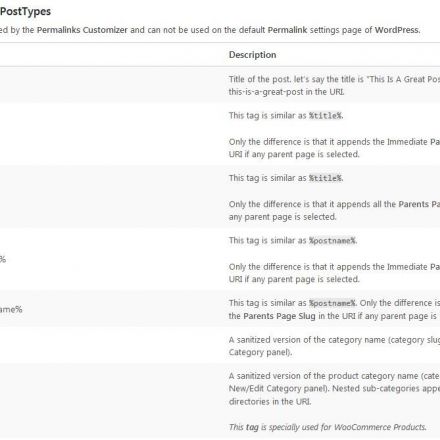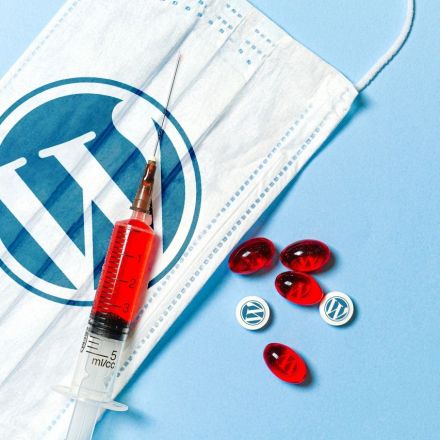10 Tips That Ensure Smooth Running of Your WordPress Website
Turning your website idea into reality on WordPress is not a job well done. In fact, your job is nowhere near its completion because once you host a website on WordPress you can never sit back and relax!
-
Turning your website idea into reality on WordPress is not a job well done. In fact, your job is nowhere near its completion because once you host a website on WordPress you can never sit back and relax! Just like every piece of machinery demands maintenance for its smooth working, WordPress websites need regular checkups to deliver a smooth user experience. Keeping this in mind, here are our top ten tips that will ensure the smooth running of your website till the end of times!
1. Regular Updates
WordPress websites that are rarely updated are an easy target for hackers. With that being said, WordPress releases updates when it encounters loopholes in its existing system. So, if you are not updating, you are essentiality maintaining your website on a weak system. For instance, take the example of REST API vulnerability. This scenario could have easily been avoided had all the affected sites immediately updated to the latest WordPress update. Now that thousands of people have learned the lesson the hard way, it is safe to say that constant WordPress updates should be carried out. Moreover, you can hire web programmers to develop a system that notifies you of updates whenever there is a new update available!
2. Daily Schedule Backups
Do you know what is worse than having a hacked WordPress website? Not having a backup that temporarily restores your site. Moreover, having a backup becomes a necessity if you are an e-commerce website and regularly deal with customers’ order information. Your WordPress website can break down any time, so it is better to deal with this problem by having a backup stored somewhere safe. Start by having multiple backups and store them on individual offline/online systems like Dropbox and external hard drive. Additionally, you can also rely on backup plugins like UpdraftPlus which allows you to create backups and store them on your Dropbox account.
3. Look for Outdated Plugins and Themes
Trying to work your WordPress website with the help of outdated plugins and themes not only present a security threat but also take a toll on your website’s smooth performance. Sniffing out the outdated tools is relatively easy. Just visit the developers’ page and there you will find whether a certain plugin or theme has been recently updated or not. Anything that is not up-to-date has to go! If the outdated plugins or themes are crucial for your WordPress website, you can always find an alternate on the internet. Or if that is not possible, you can hire web programmer to help you program one!
4. Ensure Your Security is Up-to-date
Having great security in place is a no-brainer. As the hackers are getting sophisticated in their attacks, it can be a little difficult to find malware additions in your existing files and codes. To stay ahead of this, you need sophisticated security scanning tools such as Sucuri Site Check or Quttera. The incorporation of both these tools offers a thorough website check to find website defacement, malicious codes and spam injection. For more information into the security tools and plugins, go through this article.
5. Clean Databases and Optimize It
A new WordPress website starts off with a clean database. As soon as you go live, your database starts collecting information regardless of how useless it is. From dead account information to spam comments, to useless orders; your database accrues every kind of junk which slows down your website’s performance. This is why you need plugins like Advanced Database Cleaner to delete everything and start anew! If this is not enough, then we recommend reading this article as it will tell you all there is to know about cleaning and optimizing databases!
-
6. Sniff Out Broken Links
404 errors are not good to look at. Not only they ruin user experience but they can also be detrimental to your SEO efforts. So, form a habit of checking the working of all your external/internal links on a weekly basis. If possible, avoid relying on any plugin for this purpose because such plugins require extensive time and access to large tons of data to function properly. On the other hand, external tools like Google Search Console or Online Broken Link Checker effectively pick out the broken link.
7. Setting Redirect for Dead Pages (404 Error)
After encountering dead links, the first thing you want to do is to redirect the links to any active page. But for that to happen, you need to find out if you have any broken links or not. Follow the steps mentioned above and if you come across a broken link then the incorporation of simple tools like Redirection Plugin would be enough. With the help of this plugin, you can track your 404 error pages and set up a 301 redirection. Also, this plugin works by letting you add the redirect so that your web traffic can be redirected to a working page.
8. Monitor the Comment Section
Part of your responsibility as a WordPress site owner is to provide visitors with the smooth user experience. You can easily achieve this by monitoring your comment section. Replying to comments, flagging spam comments and approving pending comments can compel your visitors to frequently visit your website. If you are not timely responding to the users’ queries in the comment section, then it is better to remove it altogether.
9. Invest in a Good CDN
Another good way to ensure the smooth working of your website is to invest in a good CDN. CDN works by providing users with a cached copy of your website from servers that are stationed closer to the users’ location. Tools like Cloudflare are a sound investment as it helps in delivering a smooth experience that is devoid of glitches.
10. Track Your Site’s Performance
No matter how much you invest in great external tools and plugins, you cannot neglect the testing and reviewing phases. When it comes to reviewing the performance of your website, always start with the smallest yet important elements. For instance, start from checking the working of your order/contact forms. Then move your way towards the browser and device compatibility. Lastly, check for site navigation and ensure that all links work fine.
Conclusion Performing maintenance checks may not be extremely thrilling, but it is something you need to do once in a while to ensure a smooth experience. With that being said, not all of the tips, mentioned above, need to be constantly implemented. This is because some of them can last you a good few months before maintenance, while others need daily attention. Lastly, if all of this seems like too much work, you can always hire someone else to perform maintenance checks for you.





























Join the Discussion